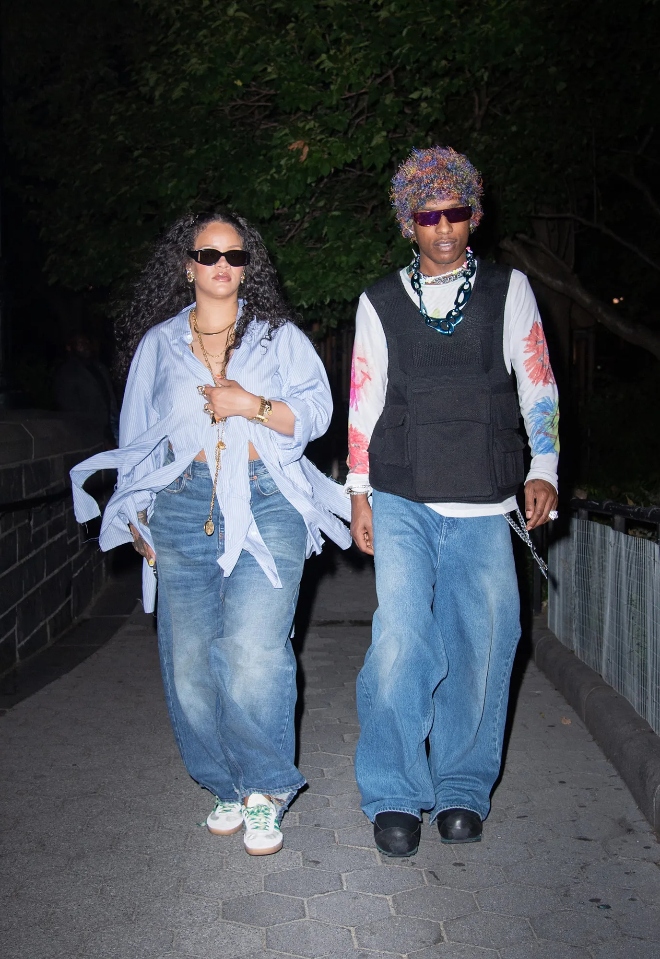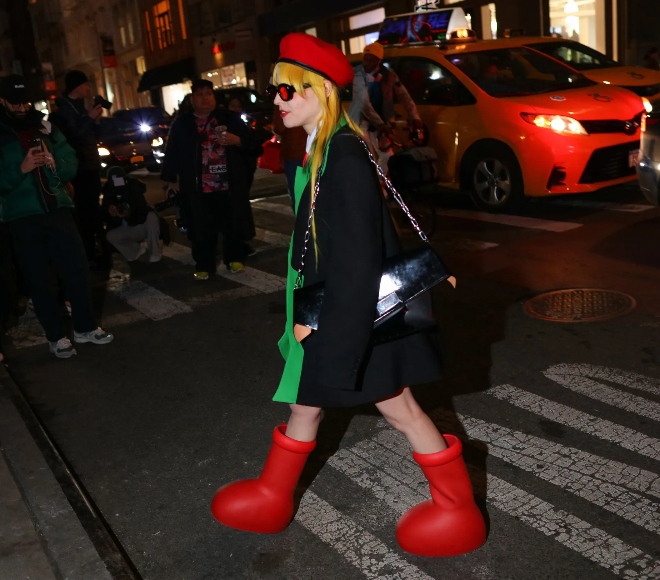
The fashion industry is not complete without collaborations. Isn’t the fact that fashion houses change creative directors every two years a collaboration between them and the designers? Loewe and Jonathan Anderson have been working together since 2013, and Louis Vuitton and the late Virgil Abloh between 2018 and 2021. The fashion world may be in unanimous agreement on the profound impact Anderson and Abloh have made in their respective tenures finding a meeting point between art and couture, but is this truly where fashion’s love of collaboration lies?
Market Reach: The Bottom Line
Every other season seems to be rife with collaborations between seemingly disparate entities such that “collaboration” has almost become a buzzword, if not a trending hashtag to power social media views. Why do fashion collaborations exist? Loewe began their venture into sports goods in 2022 with an unprecedented partnership with Swiss running brand On. Loewe-On Cloudventures is a great example of how to achieve functionality without sacrificing style. The luxe Loewe-On Cloudventures did this without a price increase that was exorbitant compared to the new embossed Loewe luxury stamp.

Critics were still left wondering: What was the point? Loewe was trying to enter the sporting world to create new performance lines for its consumers, while On was trying to get into luxury in order to create new luxury athleisure lines for its customers. “Luxury trainers”, while looking pretty, cannot be said to have advanced any great amount in the work of either fashion or performance. Rather, collaborations like Loewe and On’s seem to focus on the singular agenda of expanding market reach, thereby capturing new audiences. Fashion is driven by sales.
The Beauty of “Ugly Pretty”
Whatever the case, the fashion collab landscape is still a fertile ground for the exciting and new. Such is the nature of collaboration — we cannot always predict what will come out of the furnace of brand amalgamation. If the Loewe-On project lies on the “safe and pleasantly pretty” end of the spectrum, two notable projects which come to mind on the opposite end of “risky and almost ugly” are fashion’s flirtations with the notorious Birkenstock and Crocs sandals.

Demna Gvasalia famously unleashed on Balenciaga’s runways in 2018 and 2021 more aggressive variations of the controversial all-American rubber clogs, namely a pair of 10cm high platforms and a series of chunky militarywear-inspired rain boots to a nearly immediate cult following. The Balenciaga-Crocs reminded the fashion world that almost anything can be turned into haute couture with the right design, a contemporary fashion principle which would ring through again in the 2022 Dior-Birkenstock collaboration featuring a luxury refresh on the German sandal-makers open-toe “Milano” and closed-toe “Tokio” mules.

Kim Jones kept the orthopaedic footbed of the Birks and the overall shape, but chose to change the materials with a mix suede and felted embroidered with quaint flower patterns reminiscent of Provence blooming. A mini industrial buckle taken directly from Jones’ 2019 Dior Men’s Saddle Bag completes the upper while half of the sole is plastered with an oblique Dior monogram pattern. Despite Birkenstock and Crocs’ polarising position in fashion as lifestyle products prioritising comfort over style, the Dior Birks still came into its own and found its own demographic of loyal fans.
Cultural Currency: Trading
Turning that which is polarising into haute couture is of course not luxury fashion’s invention, but has instead long been core to streetwear — the style of mavericks, dissidents and rebels. The street culture bridges high and low style, often by stylising the controversial and unpopular to express a resistance against standard beauty and clothing norms. It is this spirit of “going against” which lends power to streetwear and gives rise to the cult-following its trends often enjoy.

In the 1990s, breakdancers wore denim that was oversized. Hip-hop artists and skateboarders also wore it. The baggy jeans of these alternative groups took on a new social meaning, one of nonchalant indifference. They styled them according to their street art and sports. Apart from their influence on the popularity and ease of casual denim, baggy jeans still feature prominently today in streetwear.

It is true that both Crocs & Birkenstock were adopted by streetwear before luxury, and worn for their ability to represent all the things high fashion rejected. It’s ironic that the new cultural currency instilled into these sandals by streetwear was likely what paved the path for their transition to luxury fashion. Not that luxury fashion is interested at all in what is specifically unpopular, but rather the enigma of being beloved precisely for being scorned is so alluring that luxury fashion has no choice but to respond and make sense of its glaring presence in fashion’s grand arena.
What makes a good collaboration?
What is the appeal of collaboration? Its boldness in creating a new niche for itself within the fashion world, a space it would otherwise not have had? As Abloh said of his 2019 collaboration with Swedish home goods and services giant Ikea, “It’s about elevating the anonymous, everyday icons that we use without noticing. When we put a doorstop on one of the legs of an ordinary chair we create something unexpected – an interruption.”

But constant interruptions of the baseline don’t allow anything meaningful to be said. They only create noise and chatter to fuel marketing hype. A good collaboration, then, must be planned appropriately. In the end, it’s only stylish to show yourself at a good time. Exuding the meaning of being fashionably late.
It is the collaborations that have the most longevity and are the most loved. It could be products with ups and downsides, but that ultimately win our hearts. Or products that are so innovative that they create new fashion standards to follow, e.g. Balenciaga’s Crocs rain boots set the standard for MSCHF’s Big Red Boots, which are also controversial.

Maybe those collaborations that last are the ones who stay true to their core principles, such as quality and craftsmanship. The ageing of leather, for example, can bring out the best in it. Or, true gold, which is pure and untarnished will never fade, has a certain charm.
Much like the equally loved and hated Birkenstocks which are meant to be worn in over months as it moulds to the specific curvature of the wearer’s feet, the best collaborations are perhaps that ones that are truly meant to be lived in, timeless yet memorable hallmarks of the culture they were born from.
Click here to read more about fashion.
